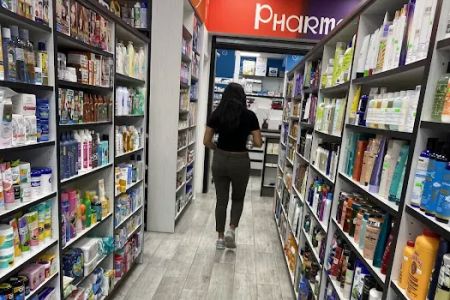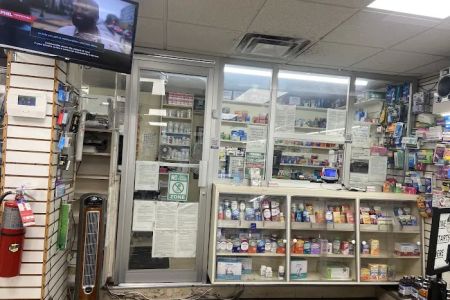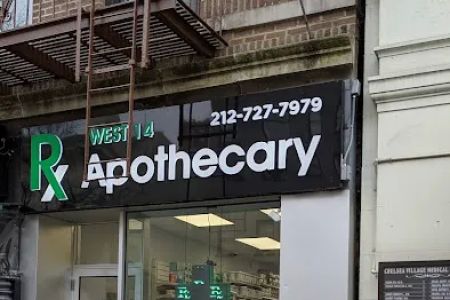Improving Access to Pharmacy Services in Rural America
Living in a rural area often comes with its own set of challenges, particularly when it comes to healthcare. As someone who has spent a significant amount of time working in both urban and rural settings, I can tell you that one of the most pressing issues in rural healthcare is access to pharmacy services. Whether it's the long travel times to the nearest pharmacy, limited availability of medications, or a lack of personalized care, the struggles for rural residents are real. But there are ways to bridge the gap and ensure that these communities receive the pharmacy services they need.
The Challenge: Limited Access to Pharmacy Services in Rural Areas
When I first started working in pharmacy services, I was shocked by the disparities between urban and rural areas. Rural communities often lack adequate pharmacy infrastructure, meaning fewer pharmacists, fewer pharmacies, and fewer resources available to residents. Many rural residents have to travel long distances—sometimes hours—to get to the nearest pharmacy. This creates a significant barrier to accessing not just medications but also essential pharmacy services like immunizations, health screenings, and medication counseling.
Additionally, rural areas often face workforce shortages, with fewer pharmacists willing to work in less populated, less financially rewarding areas. This leads to an overworked staff, longer wait times, and, sometimes, the inability to fill prescriptions at all. The problem doesn’t just stop at accessibility; it extends to the quality of care available. Without proper pharmacy support, rural residents often miss out on vital advice and counseling that could help prevent medication errors, manage chronic diseases, or avoid costly hospital visits.
Innovative Solutions: Telepharmacy and Mobile Pharmacies
Fortunately, advancements in technology have opened new doors for pharmacy services in rural areas. One of the most promising solutions is telepharmacy. Telepharmacy allows pharmacists to provide consultations, medication management, and even prescription filling through digital platforms. This technology has been a game-changer, especially in areas where pharmacists are scarce. Patients can now receive the same high level of care from the comfort of their homes without the need to drive long distances.
Telepharmacy is not only convenient, but it also ensures that patients in remote locations can continue to manage their health without interruption. For instance, a diabetic patient in a rural community who needs regular medication adjustments can now consult with a pharmacist via video call, receive guidance on their prescriptions, and even get advice on lifestyle changes—all from the safety of their home.
Another solution gaining traction is mobile pharmacies. These are essentially pharmacies on wheels, which travel to remote areas on a scheduled basis, offering a variety of services such as prescription dispensing, medication counseling, and even health screenings. Mobile pharmacies have proven to be especially beneficial during health emergencies, such as flu outbreaks, where quick access to medications and vaccines can make a huge difference.
Collaboration with Local Healthcare Providers
One key to improving pharmacy services in rural areas is collaboration. By working closely with local healthcare providers, pharmacies can create a network of support that benefits both patients and healthcare workers. In rural areas, general practitioners and pharmacists must often share information and resources to ensure patients get the best possible care. This collaboration can include sharing patient medication histories, discussing medication management strategies, and ensuring that patients are educated on proper drug use.
Moreover, rural pharmacists can become integrated into the healthcare teams, playing an active role in chronic disease management, mental health support, and preventative care. For example, in many rural clinics, pharmacists work hand-in-hand with doctors and nurses to manage patients with conditions like hypertension or diabetes, helping to monitor medications and prevent complications.
Community Outreach: Raising Awareness and Building Trust
One thing I’ve learned from working in rural pharmacy settings is the importance of building trust within the community. Rural residents are often more hesitant to adopt new healthcare practices, including pharmacy services, due to historical mistrust of outside organizations or unfamiliar services. That's why outreach programs are crucial in these areas.
Pharmacy outreach initiatives, such as health fairs, vaccination clinics, and free medication consultations, are vital in raising awareness and educating the community. These programs help build relationships with patients, encourage them to use pharmacy services more regularly, and even help identify health concerns early on. This proactive approach helps prevent more serious health issues down the line, which is critical in rural communities where access to emergency care may be limited.
Breaking Down the Financial Barriers
In addition to logistical and workforce challenges, financial barriers are a significant hurdle to accessing pharmacy services in rural areas. Many rural residents are on fixed incomes or live in poverty, making it difficult to afford medications and pharmacy services. This issue is compounded by the fact that rural areas often lack the same range of insurance options available in urban areas, leaving people without adequate coverage for prescription drugs.
To tackle this, there have been efforts to make medications more affordable, such as offering discount programs, sliding scale fees, and expanded insurance coverage for rural residents. Some pharmacies in rural areas even offer their own discount programs, providing essential medications at a lower cost to those who need them most. It's important that these solutions continue to be developed to ensure that finances don’t prevent anyone from receiving the medications and care they deserve.
Conclusion
As I reflect on the state of pharmacy services in rural areas, it's clear that while the challenges are significant, there are innovative solutions that can improve the situation. Telepharmacy, mobile pharmacies, and stronger collaboration with local healthcare providers all hold promise in improving access to care. It's a matter of raising awareness, building trust, and continuing to develop systems that make pharmacy services accessible and affordable for everyone, no matter where they live. If you're in a rural area and in need of pharmacy services, don't hesitate to explore these options—help is closer than you think!














